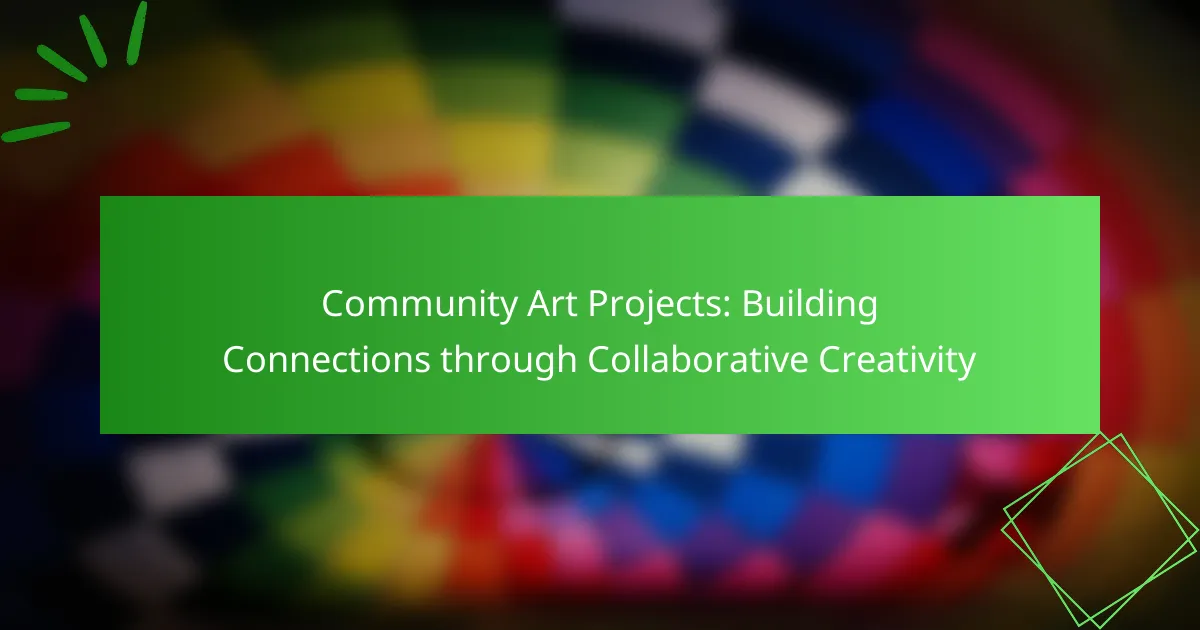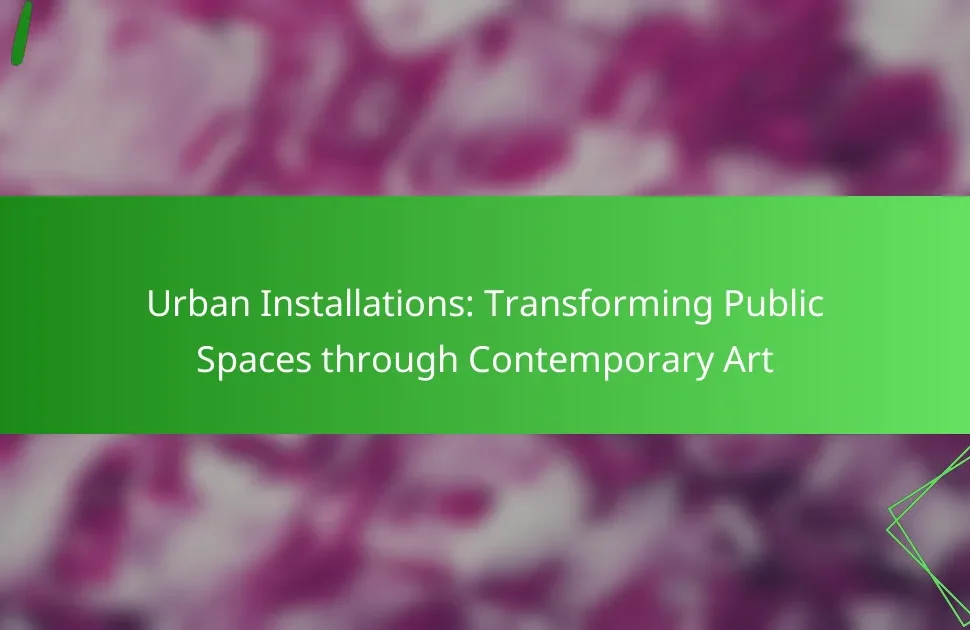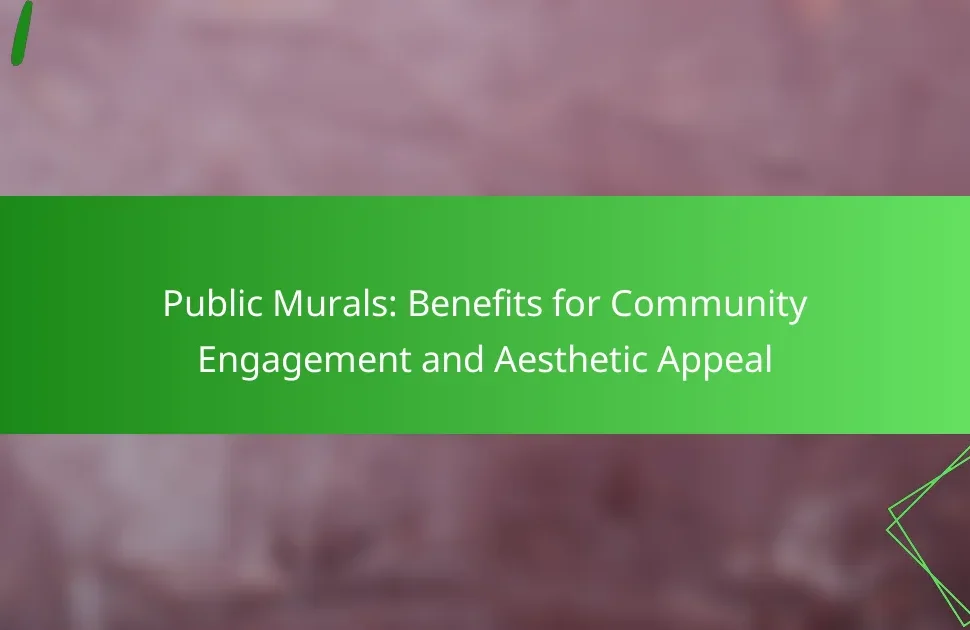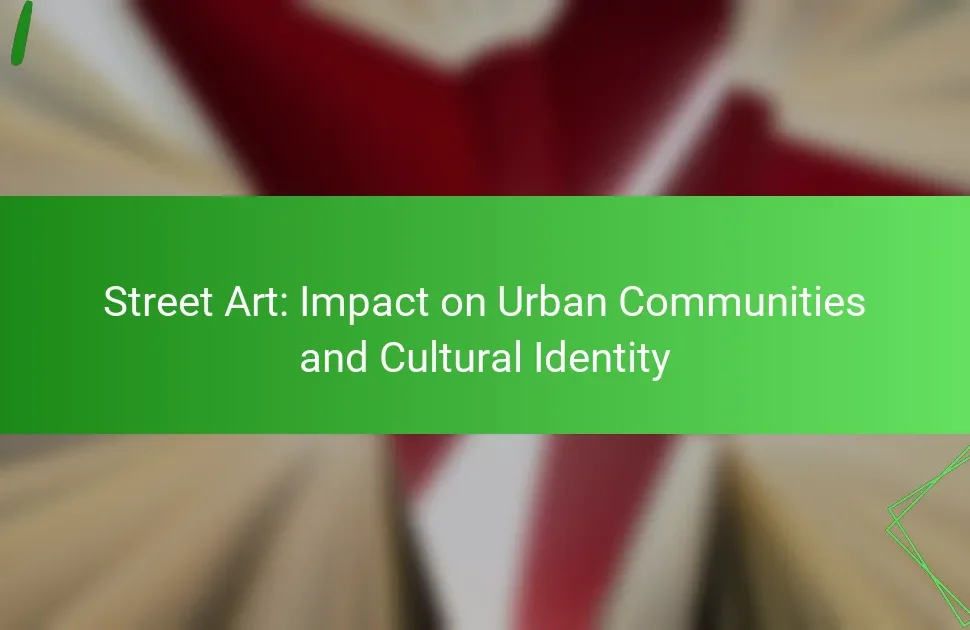Community art projects strengthen local bonds and promote cultural exchange through collaborative creativity. They involve local organizations that enhance engagement and provide resources. Various formats, such as murals and workshops, foster participation and address social issues. Despite challenges like funding shortages and logistical constraints, successful projects thrive on strong local engagement and diverse involvement.
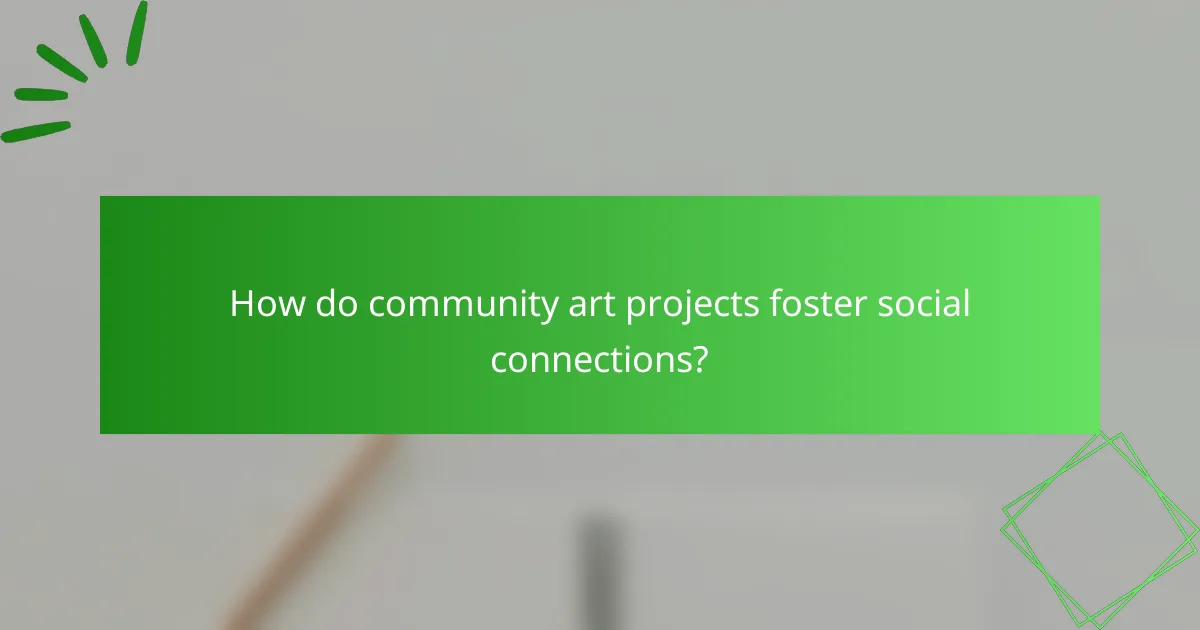
How do community art projects foster social connections?
Community art projects foster social connections by encouraging collaboration and shared experiences. Participants engage in creative processes, which build trust and understanding among diverse individuals. These projects create inclusive environments where people express themselves and learn from one another. As a result, community art initiatives strengthen local bonds, promote cultural exchange, and enhance social cohesion.
What are the emotional benefits of participating in community art initiatives?
Participating in community art initiatives fosters emotional well-being by enhancing social connections and promoting self-expression. Engaging in collaborative creativity reduces feelings of isolation and fosters a sense of belonging. Participants often experience increased self-esteem and satisfaction from contributing to a shared vision. Moreover, community art projects can serve as a therapeutic outlet, allowing individuals to process emotions and experiences through artistic expression. As a result, these initiatives not only beautify spaces but also enrich the emotional landscape of communities.
How do these projects promote inclusivity among diverse groups?
Community art projects promote inclusivity by engaging diverse groups in collaborative creativity. These initiatives foster connections through shared experiences, allowing participants to express their unique perspectives.
By involving artists from various backgrounds, projects reflect a multitude of cultural narratives. This representation encourages dialogue and understanding among participants, enhancing community bonds.
Moreover, art projects often provide accessible platforms, ensuring everyone can contribute regardless of skill level. This accessibility empowers marginalized voices, creating a sense of belonging and ownership within the community.
As a result, community art projects serve as vital tools for social cohesion, bridging gaps between different cultural, economic, and social groups.
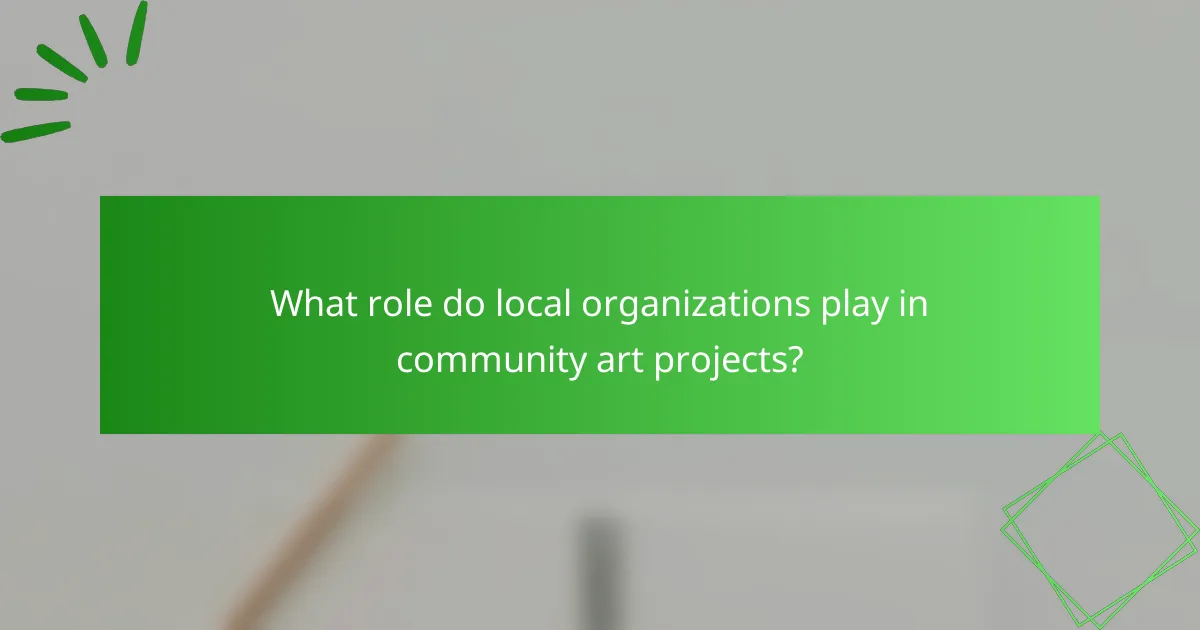
What role do local organizations play in community art projects?
Local organizations play a crucial role in community art projects by fostering collaboration, providing resources, and enhancing community engagement. They connect artists with local residents, ensuring diverse participation and representation. These organizations often secure funding and venues, facilitating project execution. Additionally, they help promote awareness and appreciation of the arts, strengthening community identity and pride. By leveraging local networks, they create sustainable partnerships that enhance the impact of art initiatives.
Which types of partnerships enhance the impact of community art initiatives?
Collaborative partnerships with local businesses, educational institutions, and non-profit organizations enhance community art initiatives. These alliances leverage resources, expertise, and networks, resulting in increased visibility and engagement. For instance, educational institutions can provide space and volunteers, while local businesses can offer funding and promotional support. Such collaborations foster a sense of ownership and pride within the community, ultimately enriching the artistic experience and impact.
How do funding sources influence the sustainability of these projects?
Funding sources significantly impact the sustainability of community art projects by providing essential financial support and resources. Diverse funding, such as grants, donations, and sponsorships, enables projects to thrive and adapt over time. Reliable funding sources foster long-term community engagement and collaboration, enhancing project visibility and reach. Additionally, projects with multiple funding streams are more resilient to economic fluctuations, ensuring ongoing creative initiatives.
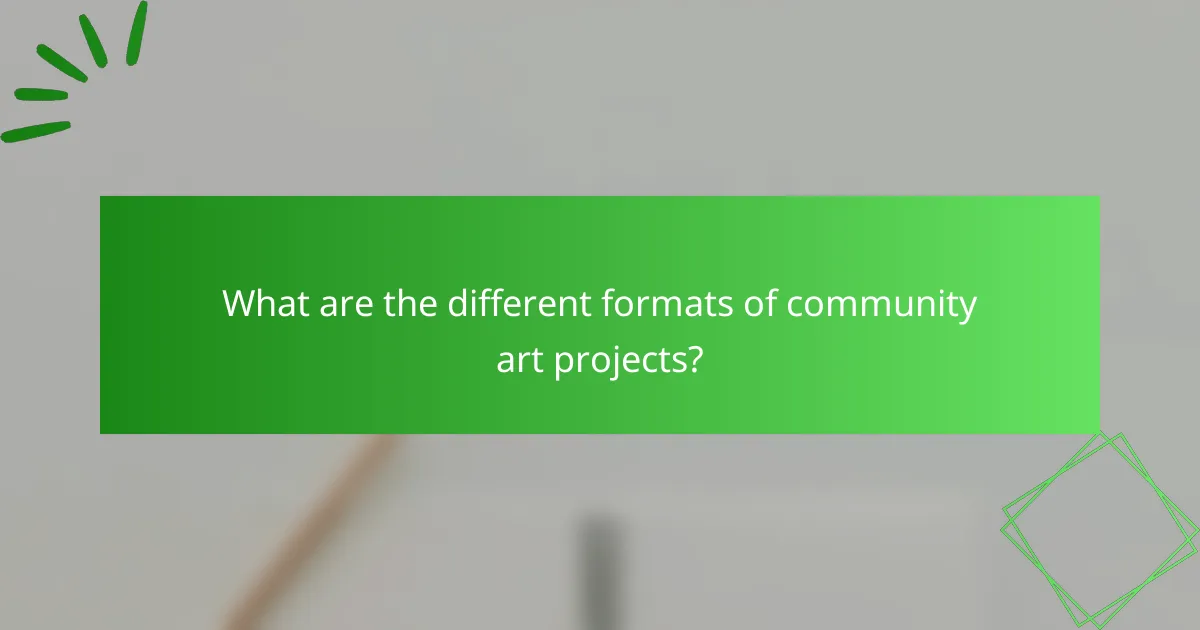
What are the different formats of community art projects?
Community art projects can take various formats, each fostering collaboration and creativity. Common formats include murals, community gardens, performance art, workshops, and exhibitions. These projects often involve local artists and residents, enhancing community bonds and encouraging participation. Each format serves unique purposes, such as beautifying spaces or addressing social issues.
How do murals and public installations engage the community?
Murals and public installations engage the community by fostering collaboration and encouraging local participation. These art forms serve as platforms for self-expression, allowing residents to share their stories and experiences.
Community art projects often enhance social cohesion, as they bring diverse groups together to create a shared identity. For example, a mural project can unite artists, volunteers, and local organizations, resulting in a sense of ownership and pride among participants.
Additionally, public installations can transform underutilized spaces into vibrant areas that attract foot traffic and stimulate local economies. This revitalization can lead to increased community interaction, as people gather to appreciate and discuss the artwork.
Overall, murals and public installations act as catalysts for connection, creativity, and cultural exchange within communities.
What is the significance of collaborative workshops in fostering creativity?
Collaborative workshops significantly enhance creativity by fostering connections among participants. These environments encourage diverse perspectives, leading to innovative ideas. Participants share skills and experiences, which enrich the creative process. Additionally, collaboration builds a sense of community, motivating individuals to engage more fully. Research shows that teamwork can increase problem-solving capabilities by up to 50%.
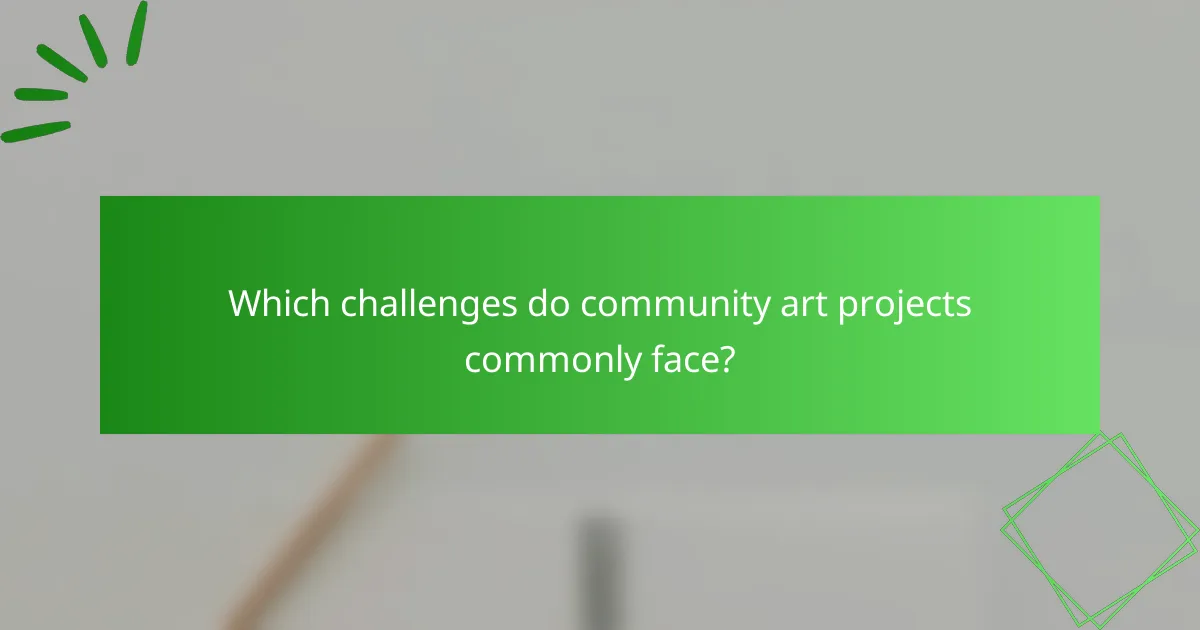
Which challenges do community art projects commonly face?
Community art projects commonly face challenges such as funding shortages, community engagement issues, and logistical constraints. These obstacles can hinder project success and limit creative expression.
Funding shortages often arise from limited grants or sponsorships, which restrict resources. Community engagement issues may stem from a lack of awareness or interest, leading to low participation rates. Logistical constraints, such as venue accessibility or timing conflicts, can also impede project execution.
Addressing these challenges requires innovative solutions, such as collaborative funding models or outreach strategies. Engaging local stakeholders can enhance awareness and participation, fostering a stronger community connection through art.
How can communities address funding limitations effectively?
Communities can effectively address funding limitations for art projects by leveraging local resources and partnerships. Collaborative efforts can include pooling funds, seeking sponsorships from local businesses, and applying for grants. Engaging community members in fundraising activities fosters ownership and increases participation. Additionally, utilizing in-kind donations, such as materials or services, can significantly reduce costs. Establishing a clear vision and demonstrating the project’s impact can attract support and enhance sustainability.
What strategies help overcome resistance from local authorities?
Engaging local authorities requires strategic approaches that foster collaboration. Building relationships through transparent communication, demonstrating community benefits, and involving stakeholders in the planning can effectively reduce resistance.
1. Establish open lines of communication to address concerns.
2. Highlight the positive impacts of community art projects on local culture and economy.
3. Involve local authorities in the project planning to gain their support.
4. Showcase successful case studies of similar projects to build credibility.
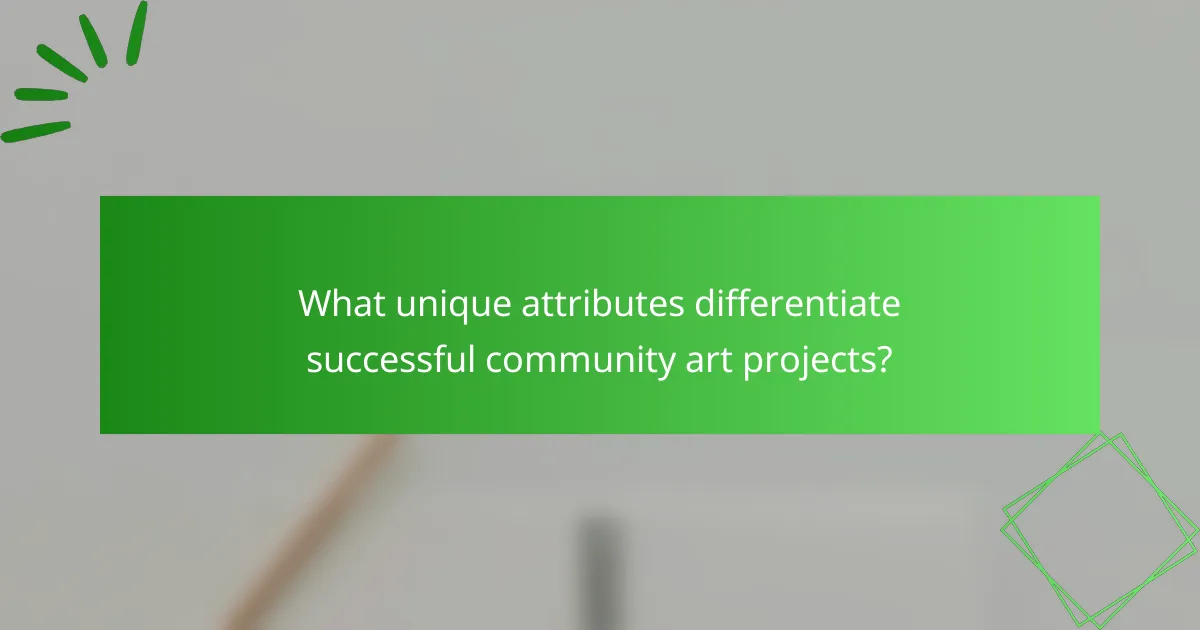
What unique attributes differentiate successful community art projects?
Successful community art projects are distinguished by their strong local engagement, diverse participant involvement, and clear, shared goals. These unique attributes foster collaboration and creativity.
Local engagement ensures projects resonate with community values and needs, increasing participation. Diverse participant involvement brings various perspectives, enriching the artistic process. Clear, shared goals align efforts, enhancing project cohesion and impact.
Successful projects often utilize unique artistic mediums that reflect community identity. For instance, murals or sculptures can symbolize local history or culture. These rare attributes create a sense of ownership and pride among community members.
Moreover, lasting partnerships with local organizations can amplify the project’s reach and sustainability. Such collaborations provide resources and support, ensuring the project’s ongoing success and relevance.
How does cultural context shape the themes and execution of these projects?
Cultural context significantly influences the themes and execution of community art projects. These projects often reflect local values, traditions, and social issues. For instance, a project in a historically marginalized neighborhood may focus on empowerment and identity, while one in a culturally rich area might emphasize heritage and celebration.
Community engagement is shaped by cultural nuances, as artists must consider local customs and practices to foster genuine connections. The success of these projects often hinges on collaboration with community members, ensuring that the art resonates authentically with their experiences and perspectives.
Moreover, cultural context can dictate the medium and style used in the projects. Traditional art forms may be prioritized in areas with strong cultural heritage, while contemporary approaches might appeal to urban settings. This adaptability enhances the relevance and impact of the art created.
Ultimately, understanding cultural context allows artists and organizers to create meaningful work that not only beautifies spaces but also strengthens community bonds.
What innovative approaches have emerged in recent years?
Innovative approaches in community art projects focus on collaboration, inclusivity, and technology integration. Projects now engage diverse groups, fostering connections through shared creativity. For instance, digital platforms enable virtual collaborations, expanding reach and participation. Additionally, art initiatives increasingly address social issues, promoting community dialogue and empowerment. These trends enhance community bonds and encourage collective problem-solving.
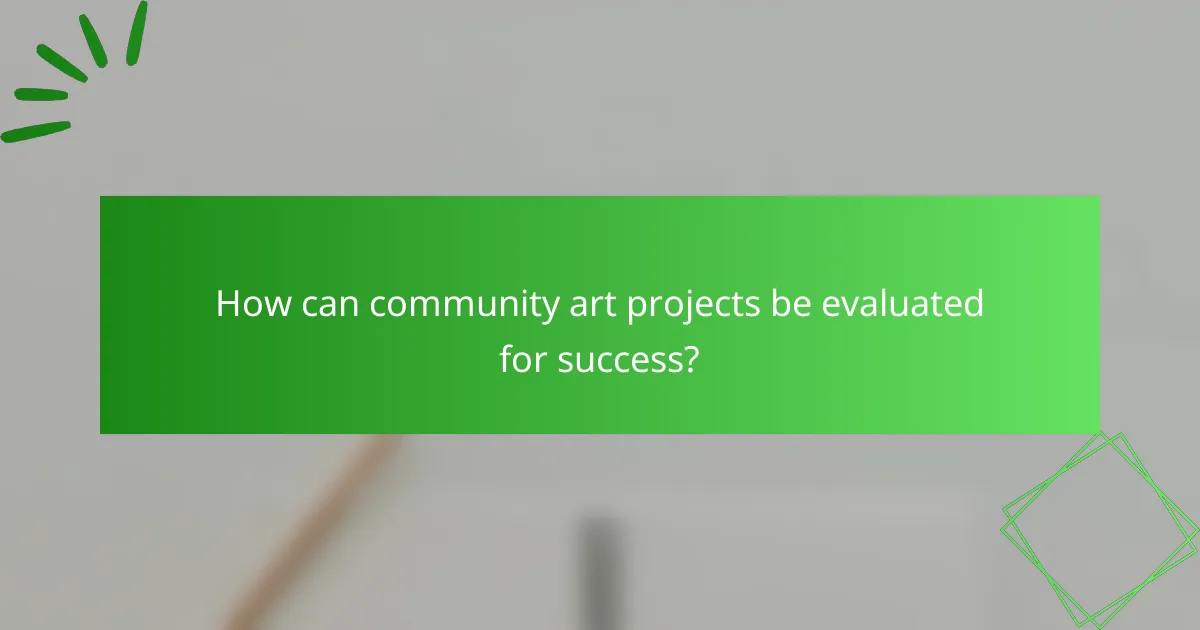
How can community art projects be evaluated for success?
Community art projects can be evaluated for success through various qualitative and quantitative metrics. Key indicators include community engagement levels, participant satisfaction, and the project’s impact on local culture.
Surveys can measure participant feedback and community perceptions. Attendance numbers and demographic diversity provide insights into reach and inclusivity. Additionally, assessing the project’s sustainability and long-term community benefits can highlight its overall effectiveness.
Collaboration with local stakeholders can enhance evaluation by incorporating diverse perspectives. Documenting changes in community dynamics or artistic expression can also serve as a valuable measure of success.
Ultimately, a combination of these metrics offers a comprehensive view of a community art project’s success and its ability to foster connections through collaborative creativity.
Which metrics are most effective in assessing community engagement?
Effective metrics for assessing community engagement in art projects include participation rates, feedback quality, social media interactions, and collaborative outputs. These metrics provide insight into community involvement and the impact of collaborative creativity.
Participation rates measure the number of individuals involved in projects, indicating interest and reach. Feedback quality assesses the depth and relevance of community responses, reflecting engagement levels. Social media interactions quantify online discussions and shares related to projects, showcasing broader community interest. Collaborative outputs evaluate the tangible results of partnerships, highlighting the effectiveness of creative collaboration.
How do qualitative outcomes contribute to the overall impact?
Qualitative outcomes significantly enhance the impact of community art projects by fostering connections. These projects cultivate shared experiences, enabling participants to express their identities and narratives. As a result, they promote social cohesion and inclusivity, which are vital for community resilience. Unique attributes of these outcomes include increased empathy and understanding among diverse groups, leading to sustained collaborative efforts beyond the project duration. Additionally, qualitative measures such as participant feedback and community engagement levels provide insights into the project’s effectiveness and areas for improvement.
What best practices can enhance the effectiveness of community art projects?
Engaging community members and fostering collaboration enhances the effectiveness of community art projects. Prioritizing inclusivity ensures diverse participation, while clear communication of project goals aligns expectations. Establishing partnerships with local organizations can provide resources and expertise. Regular feedback loops allow for adjustments based on community input, enhancing ownership and satisfaction. Celebrating milestones publicly can strengthen community bonds and encourage ongoing involvement.
